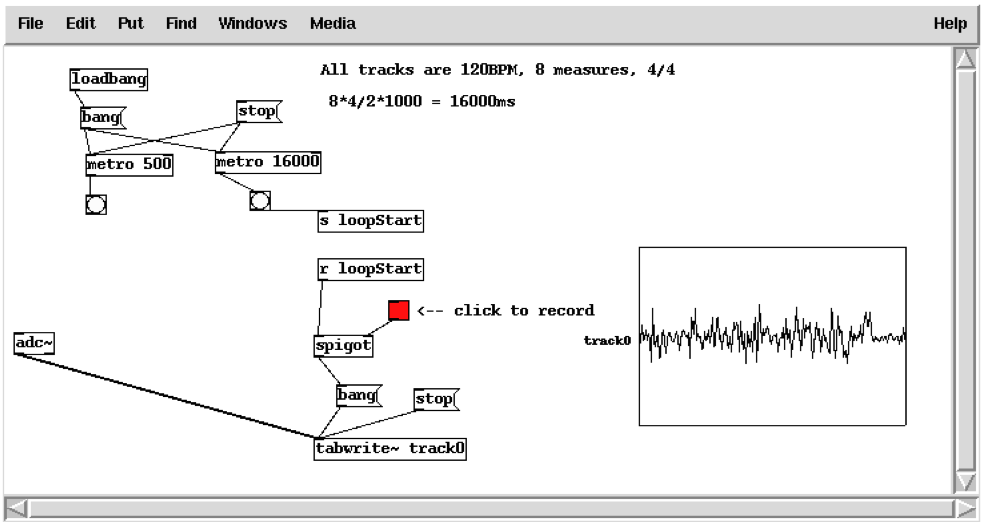
When you open the patch#5-1 automatically a loadbang starts two metro objects. The metro object sends a series of bangs at a constant rate. In this case the arguments are 500 msec and 16000 msec. Every 16 seconds a bang signal is sent to the spigot object. The spigot passes messages from its left inlet to its outlet, as long as the toggle is "on". So this patch will record 16 seconds of your music if you click the toggle. The tabwrite~ object is who writes the signal in an array called in this case track0.
travis/patch5-1.pd

Let's see how it works! Play your sound file and click the toggle to record.
travis/patch5-1.pd

Then, click again on the toggle and wait a little bit. You'll see how your recording will appear as a wave in you array track0.
travis/patch5-1.pd
To listen your recording we'll need to create another object called tabplay~. The tabplay~ object plays a sample with no transposition or interpolation.
travis/patch5-2.pd

Connecting the metro object to the bang message of the tabplay~ you will listen a constant loop of your 16 sec recording.
travis/patch5-3.pd

Now it is time to run the whole of Travis' a.pd patch. To understand how it works we still have to see two subpatches that he made: the bypass subpatch takes a signal and a toggle as inputs, and outputs the signal to the left when the toggle is off, and to the right when the toggle is on. Basically an A/B box; the splitter subpatch is just an inlet~/outlet~ combo, that helps to clean up some of the signal patch cords. That's all! Enjoy the patch!
travis/a.pd

